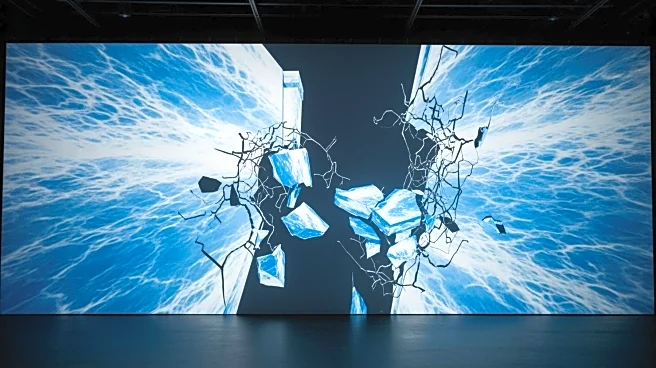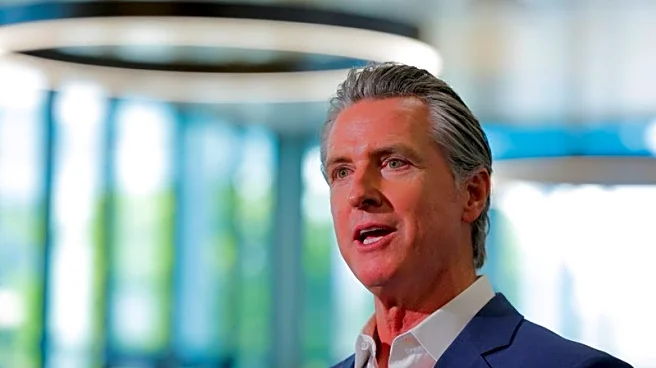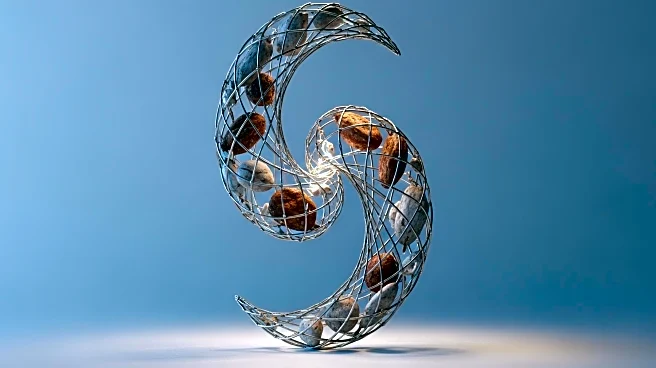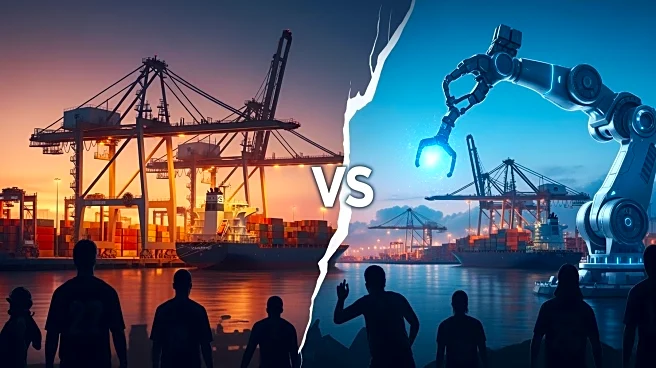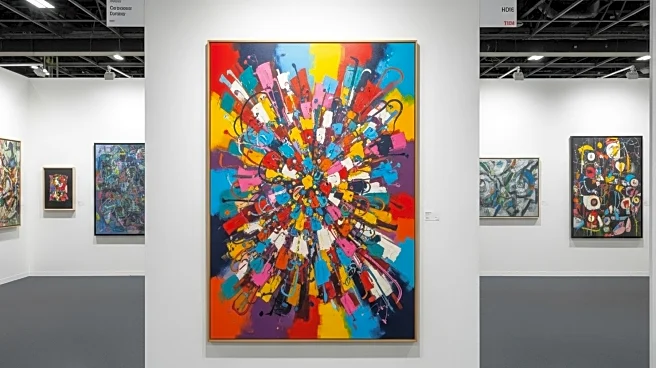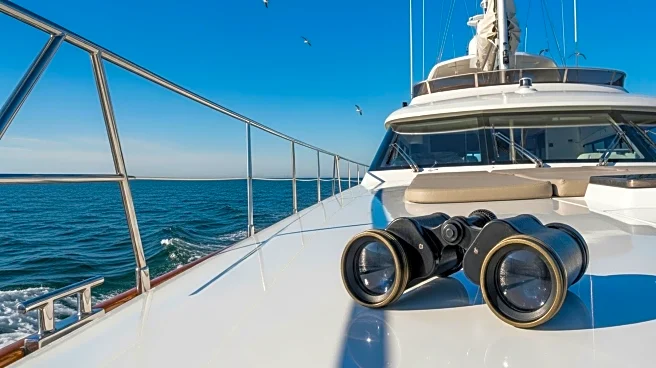What's Happening?
Lucy Raven's video installation, 'Murderers Bar,' is currently showcased at The Barbican in London. The installation focuses on the destruction of the Copco No. 1 dam on the Klamath River in California,
which was demolished between 2023 and 2024. This event followed years of activism by Indigenous communities, including the Yurok, Karuk, Klamath, Hoopa, and Shasta Indian Nation, who fought against the dam's detrimental impact on local ecosystems, particularly the salmon population. Raven's work, while not a documentary, is deeply rooted in research and collaboration with these tribes. The installation uses various techniques such as aerial photography and lidar animations to depict the dam's destruction and the subsequent release of water and dirt, symbolizing a transformation of the landscape.
Why It's Important?
The destruction of the Copco No. 1 dam represents a significant victory for Indigenous communities advocating for environmental justice. The dam had long been criticized for its negative effects on local ecosystems and the cultural heritage of the tribes living along the river. Raven's installation brings attention to these issues, highlighting the broader implications of human intervention in natural landscapes. The work serves as a reminder of the importance of preserving ecosystems and respecting Indigenous rights, potentially influencing future policy decisions regarding environmental conservation and infrastructure projects.
What's Next?
The exhibition at The Barbican is set to run until January 2026, providing an opportunity for further public engagement and discussion on the themes presented in Raven's work. As awareness grows, there may be increased pressure on policymakers to consider the environmental and cultural impacts of similar infrastructure projects. The success of the Indigenous communities in this case could inspire other groups to pursue similar actions, potentially leading to more widespread changes in environmental policy and practices.
Beyond the Headlines
Raven's installation not only addresses environmental and cultural issues but also explores the artistic dimensions of change and pressure. The accompanying kinetic sculpture, 'Hardpan,' physically manifests these ideas, offering visitors a visceral experience that complements the film. This artistic approach encourages viewers to reflect on the broader implications of human actions on the environment and the potential for positive transformation when such pressures are released.
